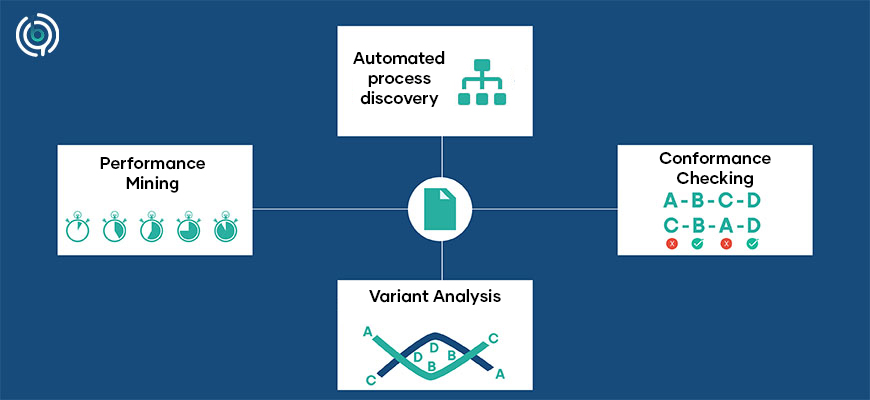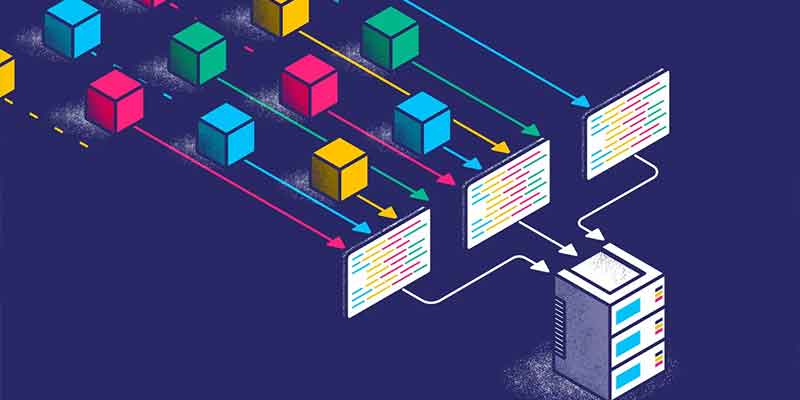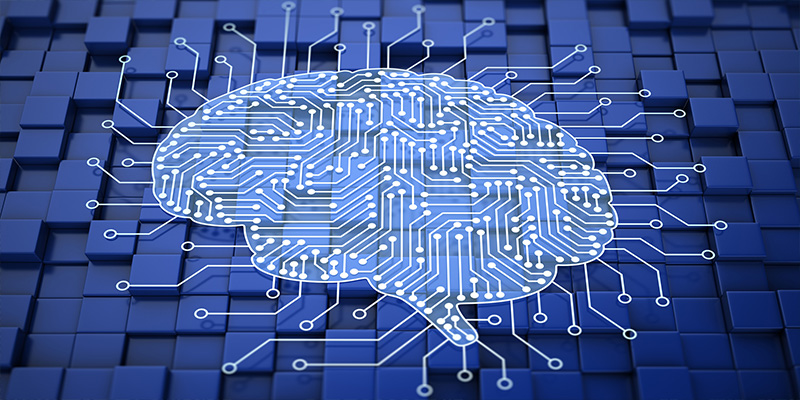Process Mining is one of the practical tools for aligning on the path of digital transformation as a new approach to extracting and analyzing your business processes. The purpose of this new approach is to support organizations to adapt to market changes as quickly as possible. The real world and the digital world are moving toward each other more than ever, so if you don’t take the initiative, it doesn’t matter how big your organization is or how much market share it has, with the change in customer behavior and taste, your power and market share will gradually decrease.
Using other digital approaches, organizations may be doing the same tasks and activities as before the digital era, just with a different tool, without experiencing any digital transformation. Process mining aims to extract information related to business processes to understand the real processes, increase process understanding speed, and promote transparency about the processes.
What is process mining, and how does it work?
Process mining is a relatively young technology, simple and essentially a data-driven process management approach. Despite its young age, its benefits and potential have been widely accepted in all organizations and businesses. Also, after the publication of the Process Mining Manifesto, which prominent academic experts presented in this field in 2011, the world’s awareness of this technology has increased. Organizations that have used process mining tools have gained an understanding of their processes that they have never experienced. What makes such great results possible?
Organizations today rely on various information systems to support their business activities. Whether it is an ERP system tracking production processes or a CRM system coordinating sales and customer service processes. Today, finding a process not supported by an IT system is challenging. These systems continuously collect large amounts of data (for example, every time a purchase order is placed or service is delivered, data is established) or the digital footprint of a business process.
In a typical organization, this results in thousands of events being logged each day. Worthless information that is just recorded. This is precisely where process mining comes into play. Process mining uses data from IT systems, so-called event logs, for detailed process analysis. Unlike traditional and business intelligence approaches, this reveals weaknesses and allows the user to find the cause of a problem. With the help of process mining tools, organizations can move away from the personal judgment-based approach of business process management (BPM), move towards a data-driven approach, and make changes based on real-time data.
Four main functions of Process Mining

Process mining allows organizations to monitor, analyze and improve their business processes with extreme precision. The actual process model is quickly revealed, and monitoring process KPIs becomes more accessible. In the following, we will explain the four functions of process mining based on different analyses performed on the event logs.
The first function:
The first function is Automated process discovery. The data from the event log is used to design a process model. Through the discovery of “as-is” models, process mining tries to display an understanding of the reality of the process flow. This understanding is the basis for other analyses. In addition, based on the new process model, it is possible to discover the communication between units, people, etc., in the organization and to understand the structure of the communication network between them.
The second function:
The second function is Conformance checking. Process mining uses the model created by automatic process discovery and checks its compliance with a set of specified rules. This stage aims to ensure the similarity of the process recorded in the event log and the approved process in the organization.
The third function:
Process mining technology allows organizations to easily compare two or more versions of a business process (variant analysis). To do this, the event log is often divided into two main variants. One focuses on cases with a favorable outcome, while the other shows cases with an unfavorable outcome. It enables organizations to analyze workflow variances and derive process improvement ideas.
The fourth (last) function:
With this function, you can extract your organization’s performance. This method focuses on statistical findings related to process performance to develop a deep understanding of the underlying workflow ultimately. The result is an advanced process model highlighting the bottlenecks, tasks, waiting time, and rework.
The main piece of the process mining: Event log

Process mining technology uses data extracted from supporting information systems (event logs). Therefore, proper identification and collection of data are essential for the success of such a project. First, all IT systems used to implement a process must be identified. Some processes may be supported by only one system, while others rely on multiple software.
After that, the data should be transferred to Process Mining tool. An automatic connection system can be implemented for a permanent solution that ensures a continuous flow of information between the two systems. Each event must have at least a case ID that can be clearly defined, a Timestamp, and an activity definition for this step. Of course, additional information such as sources, costs, and more descriptions can be entered into the event log to provide a more profound analysis process.
You might ask yourself, “What if we’re still using old systems?” Is our data quality good enough?”. The simple answer is that data can be obtained from almost any enterprise system. Many organizations still rely on old methods. Therefore, there is still time to use process mining! It is always the best solution to use data science experts as well as experts to determine the quality of the data and choose the next steps.
What are the essential goals in process mining?
Discovering, monitoring, and improving business processes are three essential goals in process mining using knowledge extraction from event logs.
Process discovery:
In this technique, an input is received, which is called a log, then the received input is converted into an output model in which there is no prior information.
Conformance checking:
The discovered process should be monitored and reviewed differently to identify errors, deficiencies, and other issues. The monitoring section is generally one of the best sections that can follow the process mining transparently.
Improvement and upgrade:
To improve, the information in the real and running processes recorded in the space of the event logs is used. In the conformance checking section, the degree of compliance of the model with the existing reality is checked, but in the improvement section, deficiencies are supposed to be fixed, such as changing models or checking the time stamp for event logs. Service levels, working time, and frequency of occurrence are significant in this context.
What are the advantages of process mining?

After talking about process mining and how to implement it, now it is essential to clarify your reason for using process mining and ask yourself why you should implement it. There are countless reasons and applications for process mining software. Overall, process mining brings transparency to an organization’s processes, allows organizations to monitor KPIs, monitor process compliance, and provides operational support for better process decision-making. Process mining can support you if you already use business process management in your organization or are currently starting your process management or digital transformation journey. This can be a quick start to BPM thanks to automated business process discovery. In addition, it enables businesses to understand their processes fully. Process mining also supports many digital actions such as:
The continuous process improvement cycle:
Process mining understands your business processes and makes changes based on real-time data.
Improve customer satisfaction:
Process mining reduces wait time, avoids unnecessary repetitions, and extends the customer journey.
Increase process efficiency:
Process mining analyzes bottlenecks, process loops, and undetected rework.
Support for your organization’s conformance checking management:
process mining uses conformance checking to review your processes’ compliance with the organization’s rules and regulations and quickly identify non-conformities.
Process automation:
Process mining identifies and evaluates opportunities for automation by examining the organization’s processes.
Increase agility:
process mining identifies process streams that are more efficient than the “mainstream” and expands them throughout the organization.
The role of process mining in Business Process Improvement (BPI)
Conclusion
Process mining is the bridge between data mining and business process management. The main goal of process mining is to create transparency for processes and organizations. This is a set of new techniques you must master to compete in today’s market. By using process mining, IT systems and support are integrated, and it becomes easier to recognize the potential for improving processes. Also, data stored in IT systems can be used to discover and illustrate process models. These models are the basis of various software fields, such as process analysis, optimization, and compliance checking.
If you have any questions about Process Mining, you can book a tour with us right now.



